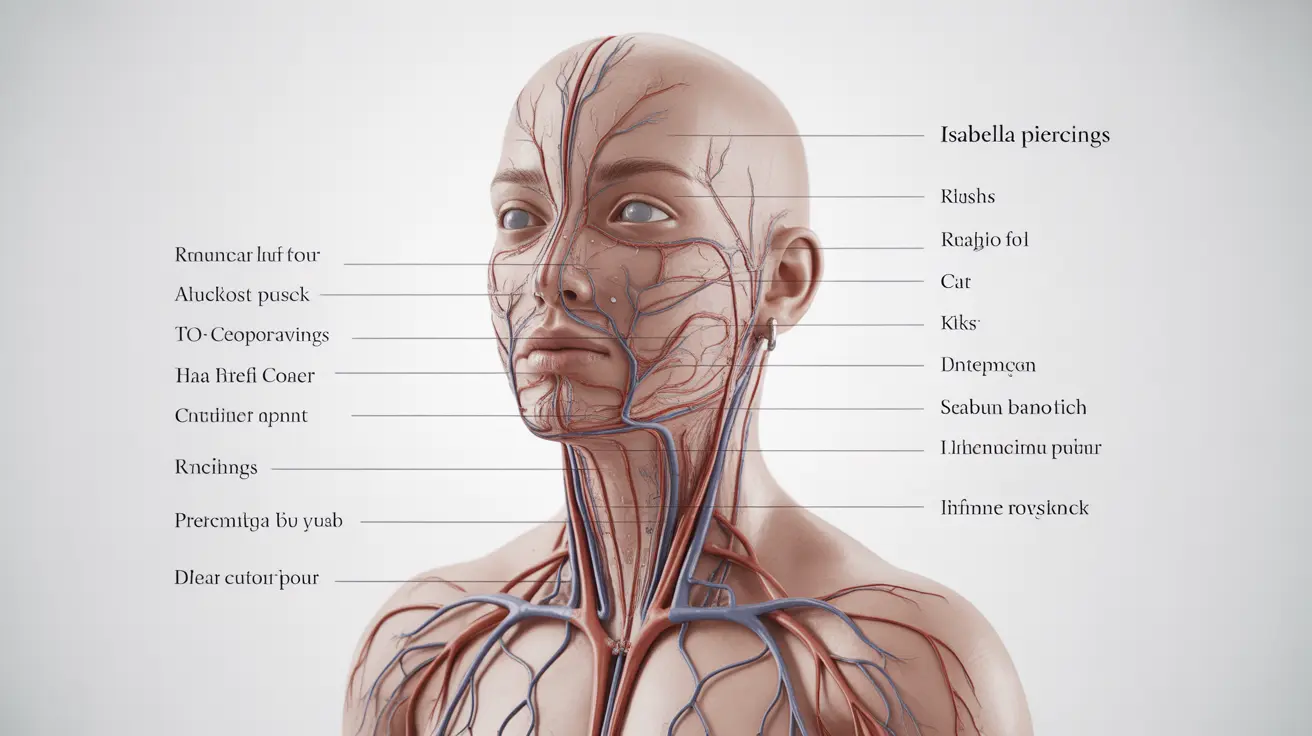Isabella piercings are a type of intimate body modification that has garnered attention in body piercing communities. While some may find the concept intriguing, it's crucial to understand that this particular piercing carries significant risks and is generally not recommended by professional piercers. This comprehensive guide will explore why this piercing raises concerns and what safer alternatives exist.
What Is an Isabella Piercing?
An Isabella piercing is a deep genital piercing that passes through highly sensitive anatomical structures. Unlike more common intimate piercings, this modification involves a lengthy jewelry path that traverses multiple tissue layers. Understanding its placement and anatomy is crucial for recognizing why medical professionals and experienced piercers often advise against it.
Critical Safety Concerns
The safety risks associated with this piercing are numerous and serious. The procedure involves penetrating through delicate nerve-rich tissues, which can result in:
- Severe nerve damage
- Excessive bleeding
- High risk of infection
- Potential loss of sensation
- Complex healing complications
- Scarring and tissue damage
These risks are not merely theoretical - they represent real potential outcomes that have led many professional piercers to refuse to perform this modification.
Anatomical Considerations
The complexity of female genital anatomy makes this piercing particularly problematic. The area contains:
- Dense nerve networks
- Numerous blood vessels
- Sensitive erectile tissue
- Multiple tissue layers
- Important sensory structures
The extensive penetration depth required for this piercing increases the likelihood of complications and makes proper placement extremely challenging, even for experienced practitioners.
Professional Perspectives
Most reputable piercing professionals take a firm stance against performing Isabella piercings. Their reasons include:
- Ethical concerns about potential permanent damage
- High risk-to-benefit ratio
- Difficulty ensuring proper placement
- Extended healing complications
- Limited research on long-term effects
Safer Alternative Options
For those interested in intimate piercings, several safer alternatives exist that are widely accepted in the professional piercing community:
- Vertical clitoral hood (VCH) piercings
- Horizontal clitoral hood piercings
- Triangle piercings
- Christina piercings
- Labia piercings
These alternatives typically have established safety protocols, shorter healing times, and are performed by qualified professionals.
Frequently Asked Questions
What are the risks and potential complications of getting an Isabella piercing? The main risks include severe nerve damage, excessive bleeding, infection, loss of sensation, difficult healing, and potential permanent tissue damage. The depth and location of this piercing make these complications more likely than with standard intimate piercings.
How does an Isabella piercing differ from other female genital piercings like the vertical clitoral hood or triangle piercing? An Isabella piercing is significantly deeper and more invasive than VCH or triangle piercings. While VCH and triangle piercings typically only penetrate surface tissue, an Isabella piercing traverses multiple sensitive anatomical structures, making it considerably more dangerous.
Why do most professional piercers advise against getting an Isabella piercing? Professional piercers typically refuse to perform Isabella piercings due to the high risk of severe complications, potential nerve damage, and ethical concerns about causing permanent harm. The complex anatomy of the area makes safe placement extremely difficult.
What should I know about the healing process and aftercare for an Isabella piercing? Due to the extensive tissue trauma and depth of the piercing, healing is typically prolonged and complicated. The risk of infection is high, and proper aftercare is extremely challenging due to the location and nature of the piercing.
Are there safer alternatives to the Isabella piercing that still offer similar aesthetic or sensory effects? Yes, several safer alternatives exist, including VCH piercings, triangle piercings, and Christina piercings. These options are performed by professional piercers, have established safety protocols, and offer aesthetic and sensory benefits with significantly lower risks.




